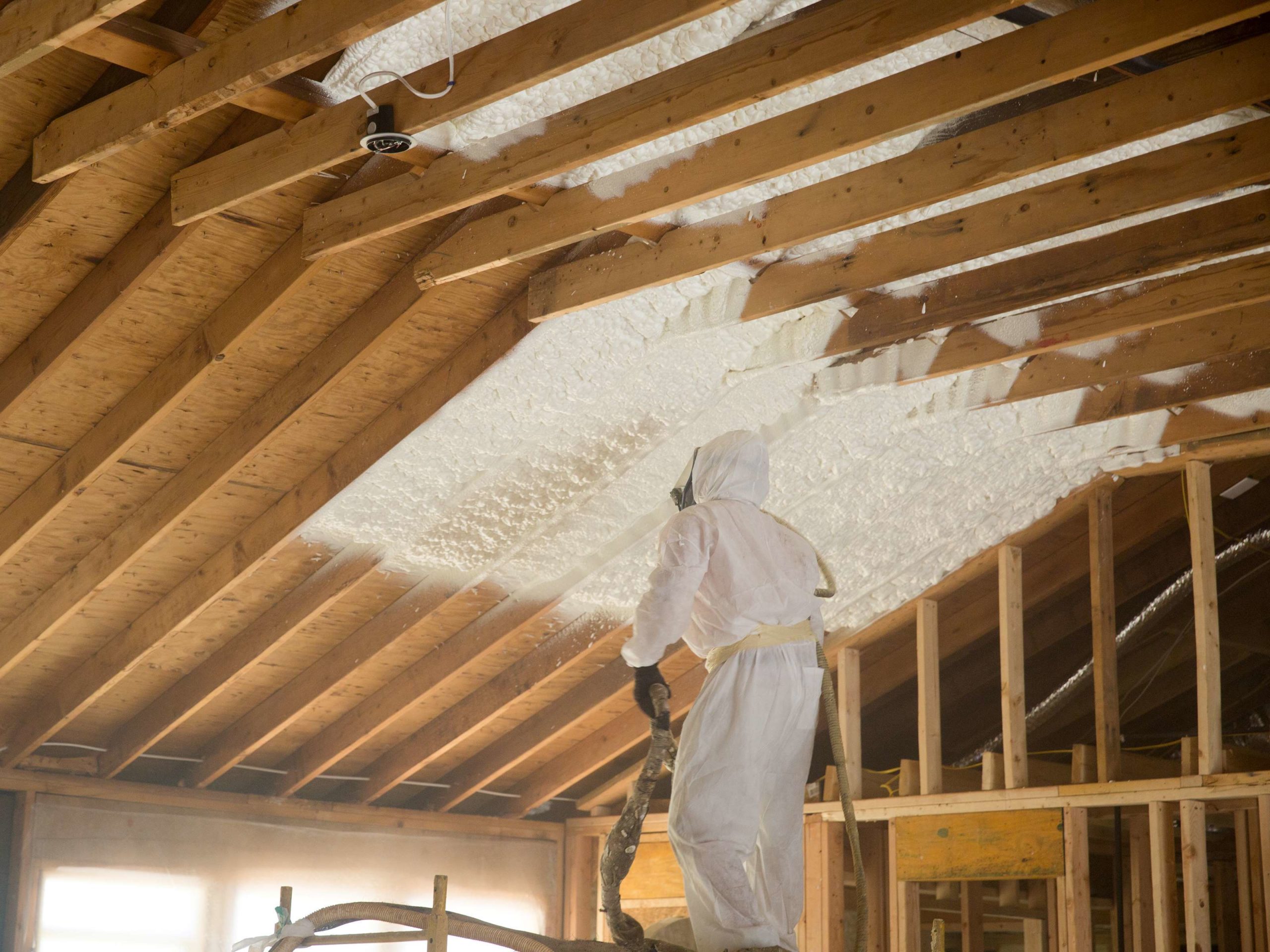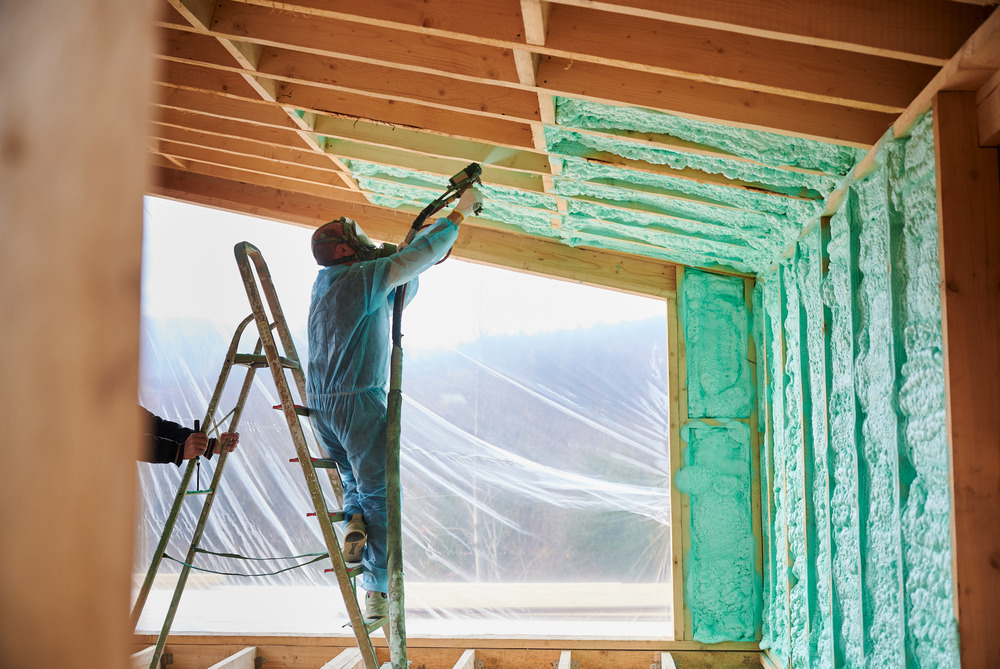Frequently Asked Questions About Spray Foam Installation and Usage
Frequently Asked Questions About Spray Foam Installation and Usage
Blog Article
Spray Foam: The Ultimate Remedy for Air Sealing and Insulation
Spray foam insulation has actually become a leading option for effective air securing and thermal insulation, supplying an unique combination of properties that establish it aside from typical approaches. Its capacity to increase and fill gaps makes it specifically effective in protecting against air leakage, which can dramatically influence energy efficiency. Nonetheless, recognizing the full extent of its advantages, setup processes, and contrasts with various other insulation kinds is vital for making notified choices. As we explore these elements, the effects for both new building and constructions and retrofits become significantly significant. What factors should affect your option?
What Is Spray Foam?
Spray foam is a flexible insulation product that combines the concepts of air sealing and thermal resistance to boost power efficiency in structures. Composed mainly of polyurethane or other similar substances, spray foam is applied as a liquid that expands upon contact with surface areas, developing a solid, continuous layer of insulation. This one-of-a-kind residential or commercial property enables it to fill up spaces, fractures, and gaps that traditional insulation materials may ignore, supplying a remarkable air seal.
There are 2 major sorts of spray foam: open-cell and closed-cell. Open-cell spray foam is lighter and much more versatile, offering excellent audio absorption and a reduced R-value per inch - Spray Foam. On the other hand, closed-cell spray foam is denser, giving a higher R-value, wetness resistance, and added structural integrity to building parts
The application procedure usually includes specific devices, making certain a seamless application that complies with various substrates, consisting of wood, concrete, and steel. This flexibility makes spray foam ideal for both new buildings and retrofitting existing frameworks. Its capacity to create a closed obstacle considerably contributes to reducing energy intake and improving indoor air quality, thus making it a recommended selection amongst home builders and house owners alike.
Advantages of Spray Foam Insulation
One of the most substantial advantages of spray foam insulation is its exceptional capability to produce a constant air obstacle, which effectively reduces energy loss. Unlike typical insulation products, spray foam increases to fill voids and cracks, ensuring that air leakage is substantially decreased. This characteristic not just enhances power efficiency yet likewise results in decrease utility expenses with time.
Additionally, spray foam insulation provides premium thermal resistance, adding to an extra steady indoor environment. Its high R-value per inch permits reliable insulation in constrained areas, making it optimal for attics, wall surfaces, and crawl areas. Moreover, the moisture-resistant buildings of spray foam aid stop mold and mold growth, promoting much healthier living conditions.
An additional important benefit of spray foam insulation is its sound-dampening top qualities (Spray Foam). It successfully decreases sound transmission between areas, producing a quieter and more comfy home environment. The durability of spray foam likewise stands out, as it does not droop or settle with time, maintaining its efficiency throughout its lifespan
Exactly How Spray Foam Works
Recognizing how spray foam insulation functions is essential for valuing its effectiveness in air sealing and thermal resistance. Spray foam insulation is composed of two primary elements: isocyanate and polyol resin. When these elements are combined, they undergo a chain reaction that creates the material to broaden swiftly, creating a dense foam that loads fractures, voids, and dental caries.
As the foam increases, it follows surfaces, forming a closed seal that dramatically reduces air infiltration. This characteristic makes spray foam insulation highly effective at avoiding drafts and wetness penetration, which can cause power loss and damages over time. In addition, the closed-cell variation of spray foam supplies superior thermal resistance due to its rigid structure, efficiently lessening warm transfer.
The one-of-a-kind residential or commercial properties of spray foam enable it to satisfy uneven surfaces, making sure detailed protection and a seamless barrier. Because of this, spray foam insulation not only enhances power performance yet likewise contributes to enhanced indoor air quality by lowering the buildup of contaminants and allergens. Ultimately, recognizing the technicians behind spray foam highlights its function as an exceptional choice for insulation and air securing in both property and industrial applications.
Installation Refine Summary

Before setup, the room must be effectively cleaned and prepped, guaranteeing that surface areas are devoid of dirt, moisture, and debris. Since pollutants can endanger attachment and total efficiency, this step is essential. When the area is prepared, the application includes mixing the 2 elements of the spray foam, which broadens upon get in touch with and fills up spaces successfully.
Trained experts need to carry out the installation, utilizing specific equipment to make sure consistent protection and optimum thickness. Safety preventative measures, consisting of using protective gear and guaranteeing proper ventilation, are vital during this process. After application, the foam typically cures promptly, creating a strong barrier that enhances power effectiveness.
Comparing Spray Foam to Conventional Insulation
When examining insulation options, spray foam insulation stands out in contrast to conventional products such as fiberglass and cellulose. Unlike fiberglass and cellulose, which can enable air seepage, spray foam broadens upon application, filling gaps and gaps to produce an airtight seal.
Furthermore, spray foam provides a greater R-value per inch than traditional insulation types, offering more reliable moved here thermal resistance in a thinner profile. This particular is particularly helpful precede with limited dental caries depth. Additionally, spray foam is immune to moisture and mold development, which can be a significant interest in cellulose and fiberglass, particularly in damp settings.
Nonetheless, spray foam insulation usually lugs a greater upfront expense than its standard equivalents. Homeowners should evaluate this first financial investment against long-term energy cost savings and efficiency advantages. Ultimately, while both insulation types serve their function, spray foam becomes an extra innovative solution for Extra resources modern insulation needs, especially in terms of air sealing and thermal effectiveness.

Verdict
In recap, spray foam insulation stands for a very effective option for achieving find more info optimum air securing and thermal resistance. Its one-of-a-kind residential or commercial properties, including moisture resistance and audio dampening, make it ideal for numerous applications in both new buildings and retrofitting jobs (Spray Foam). Although the first expenses might be higher contrasted to typical insulation products, the long-lasting benefits, such as substantial power cost savings and improved interior air high quality, justify the financial investment and emphasize its value in modern-day structure practices.
Spray foam insulation has arised as a leading solution for reliable air sealing and thermal insulation, supplying a distinct mix of buildings that set it apart from typical techniques.Spray foam is a functional insulation material that incorporates the principles of air securing and thermal resistance to boost energy performance in buildings.When examining insulation options, spray foam insulation stands out in comparison to typical materials such as fiberglass and cellulose. Inevitably, while both insulation types offer their purpose, spray foam arises as a more sophisticated remedy for contemporary insulation demands, particularly in terms of air sealing and thermal performance.
In summary, spray foam insulation represents a very effective service for attaining optimal air sealing and thermal resistance.
Report this page